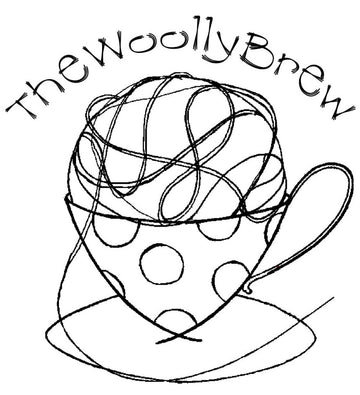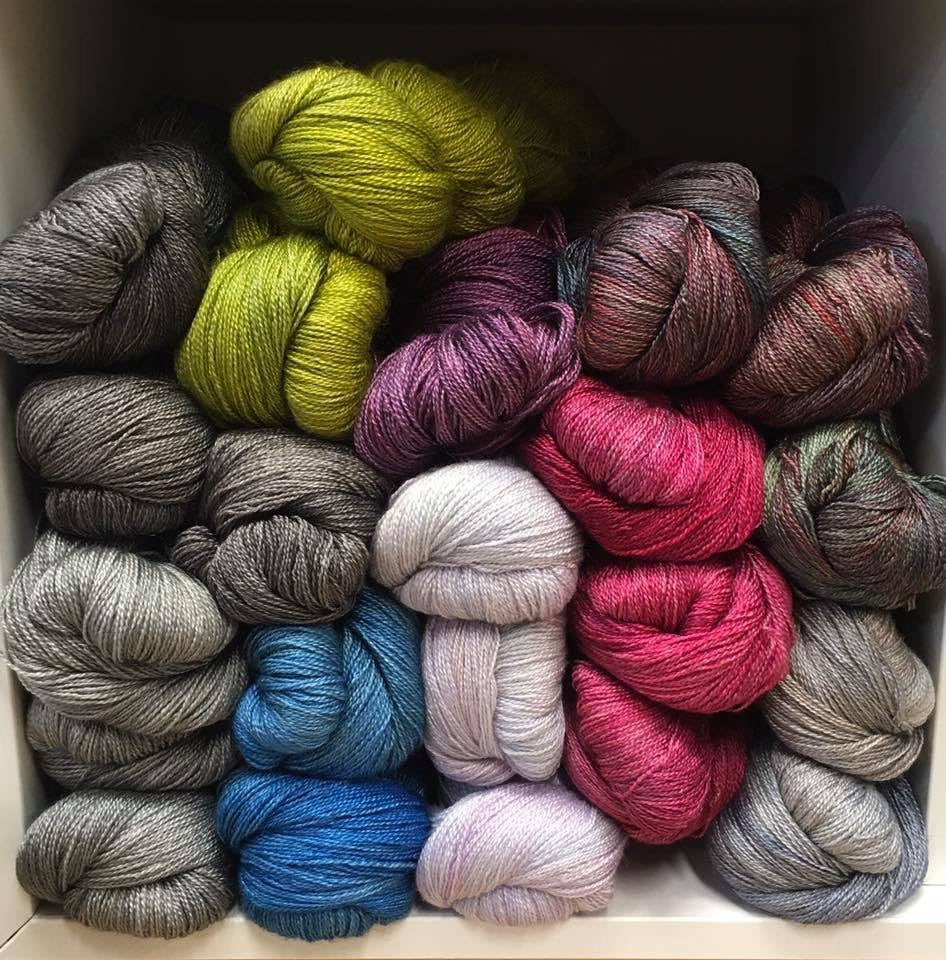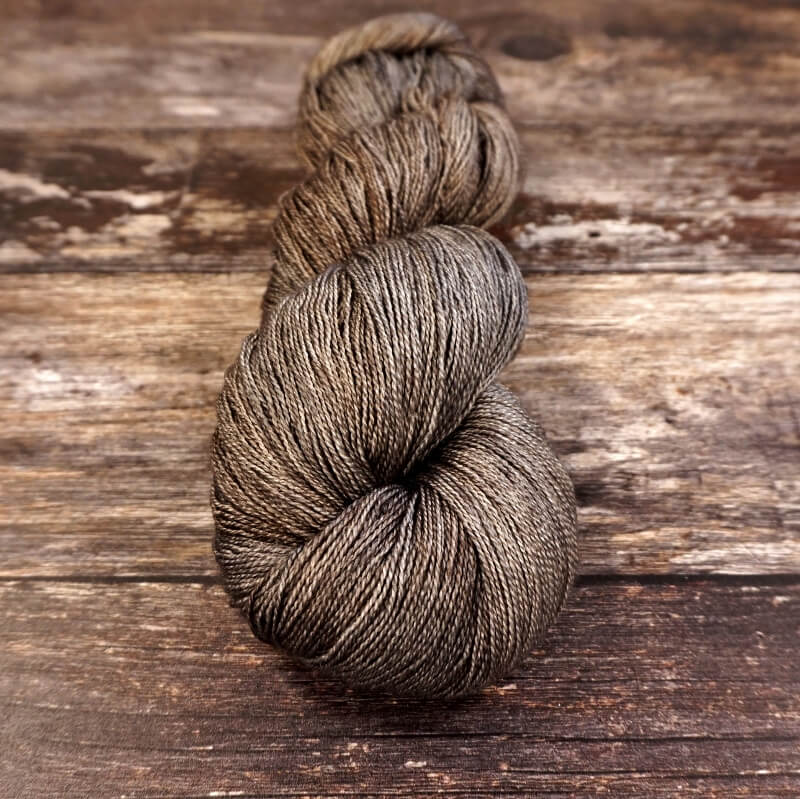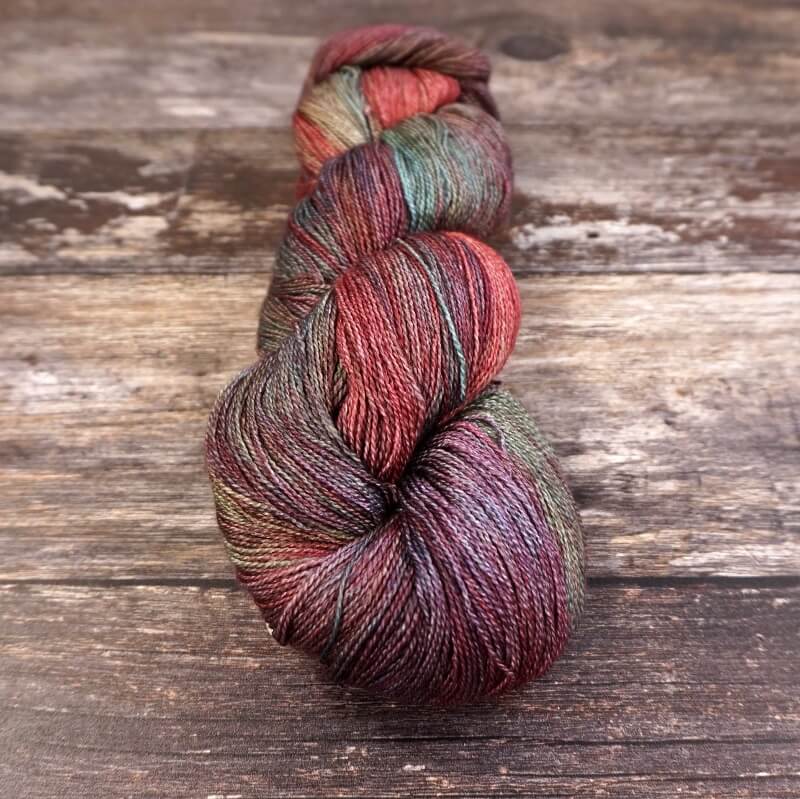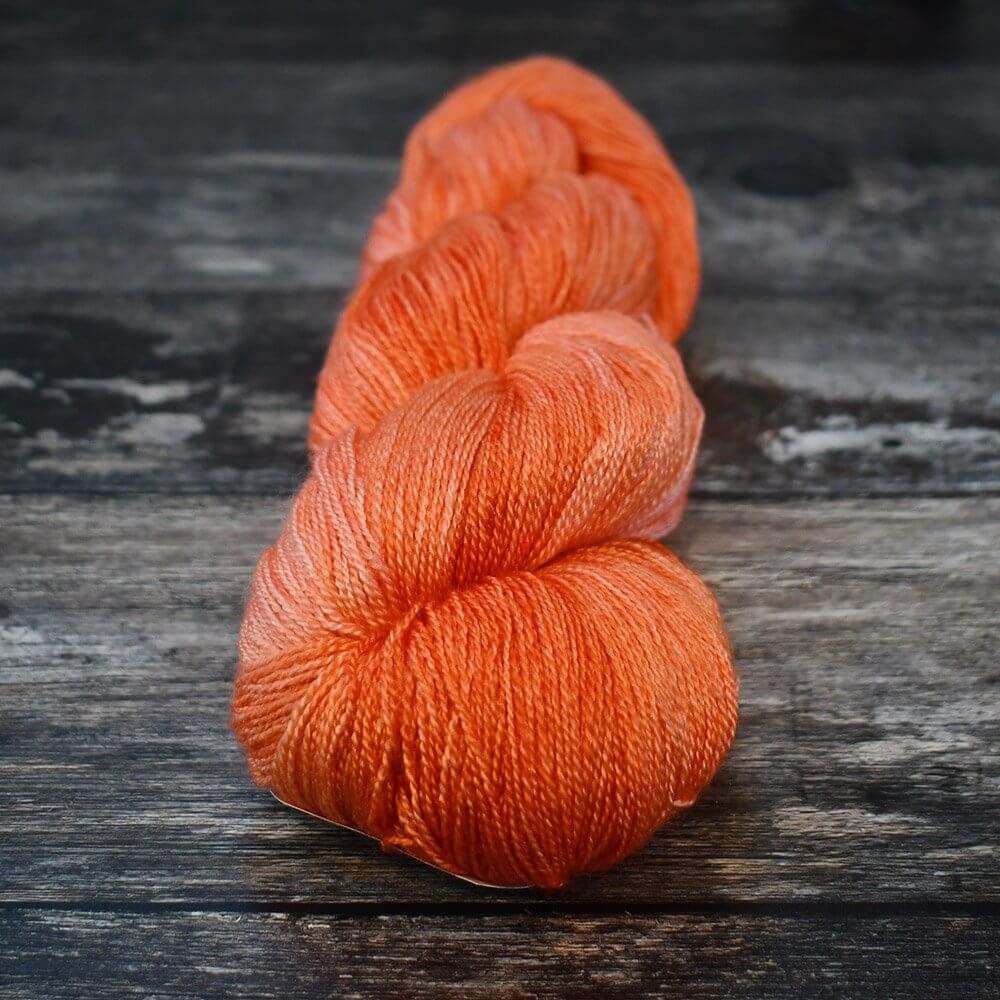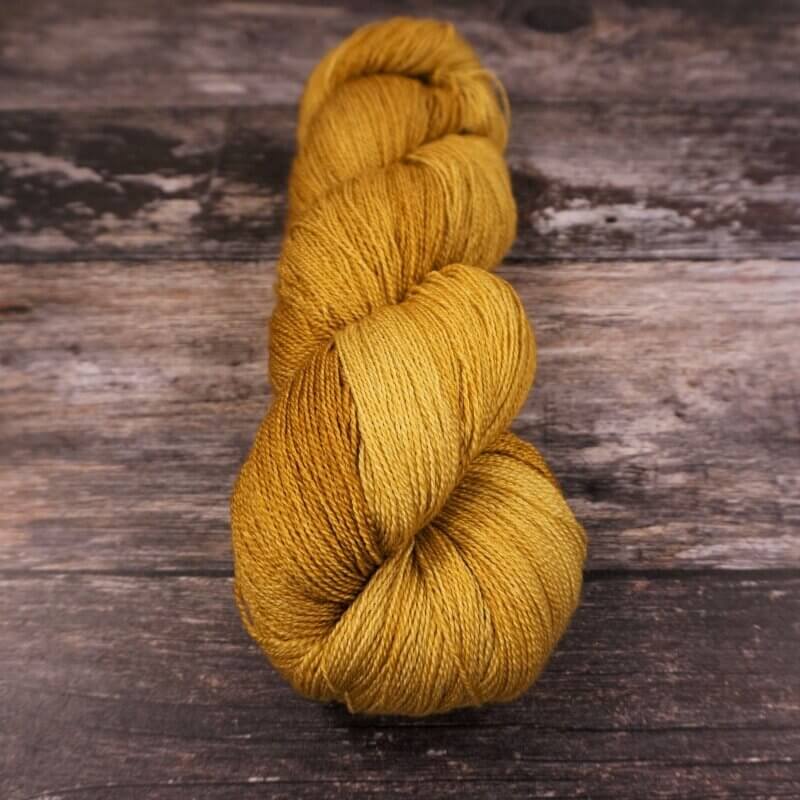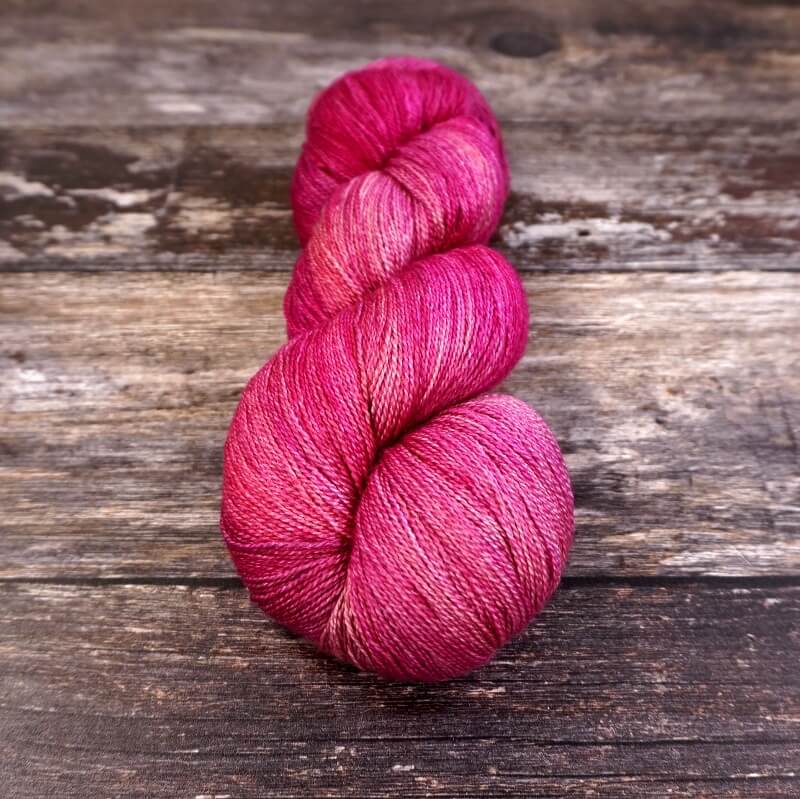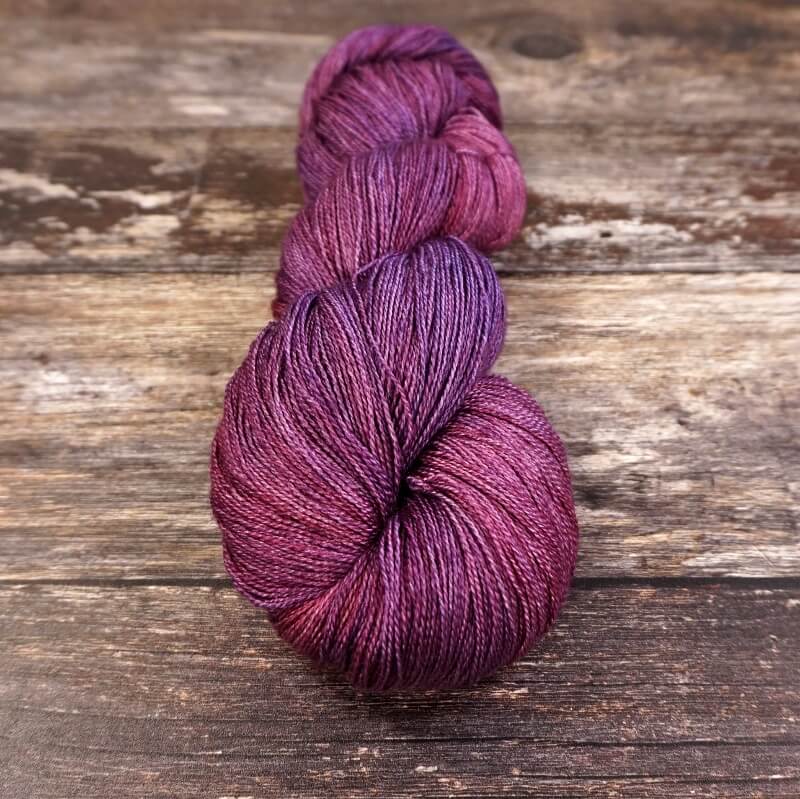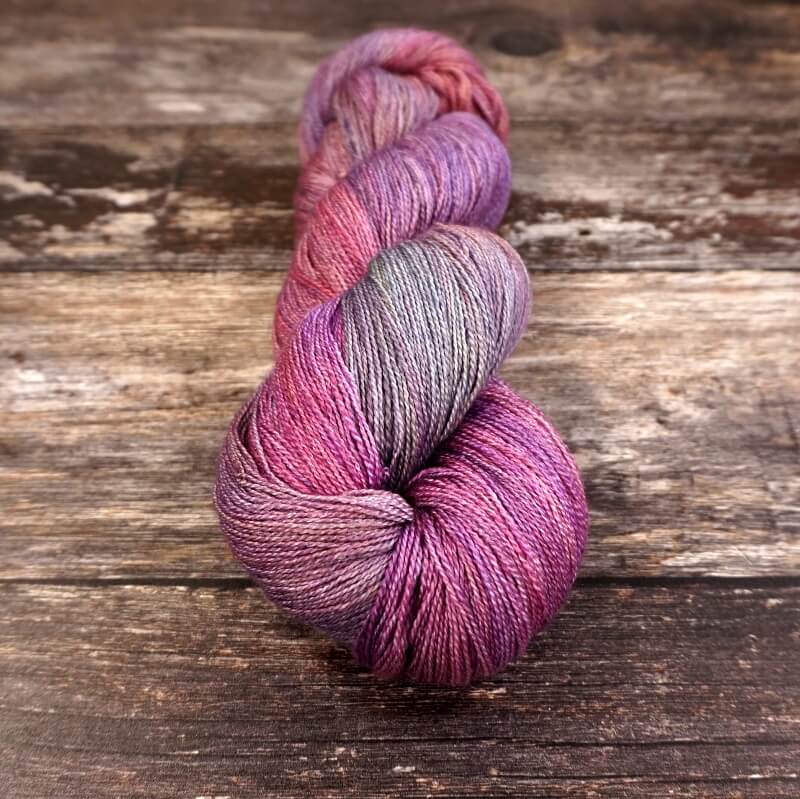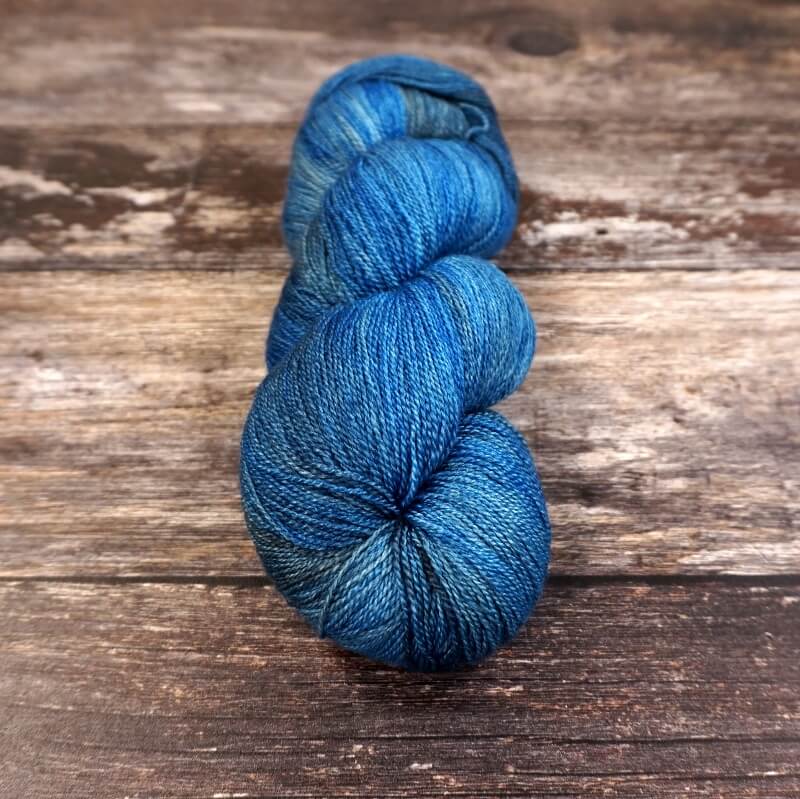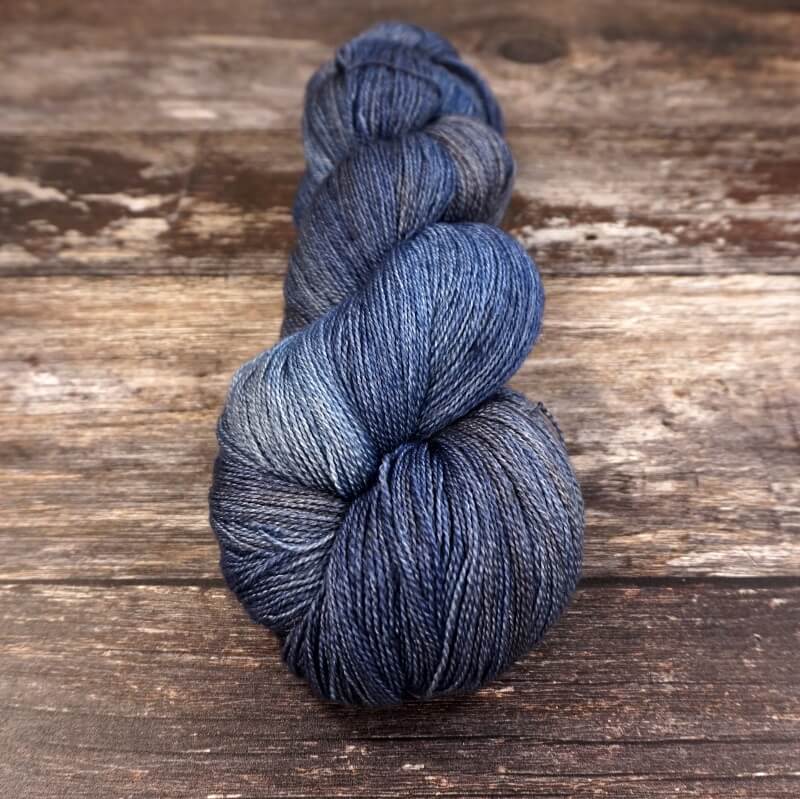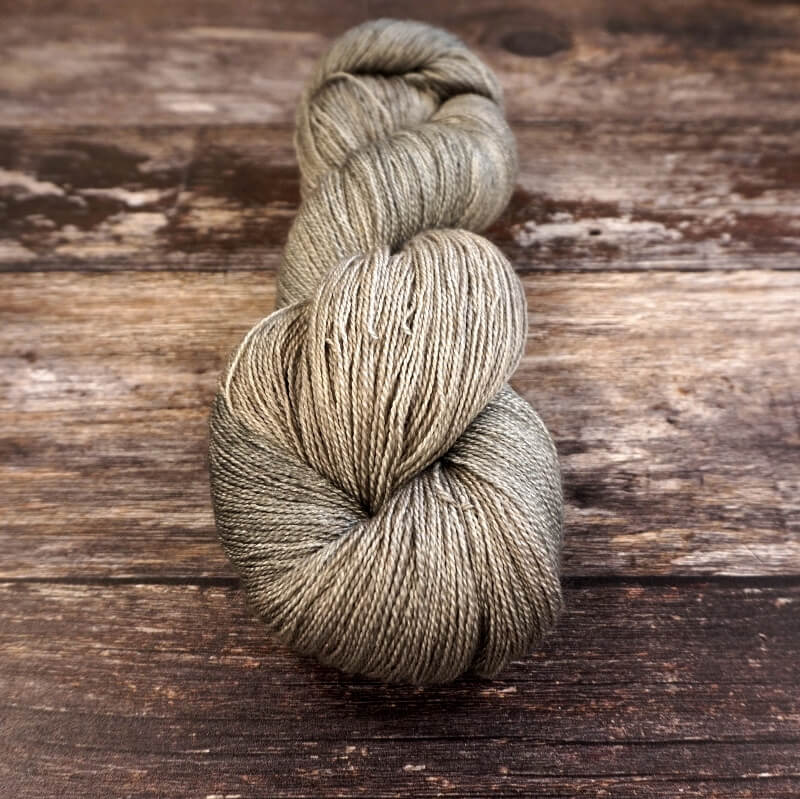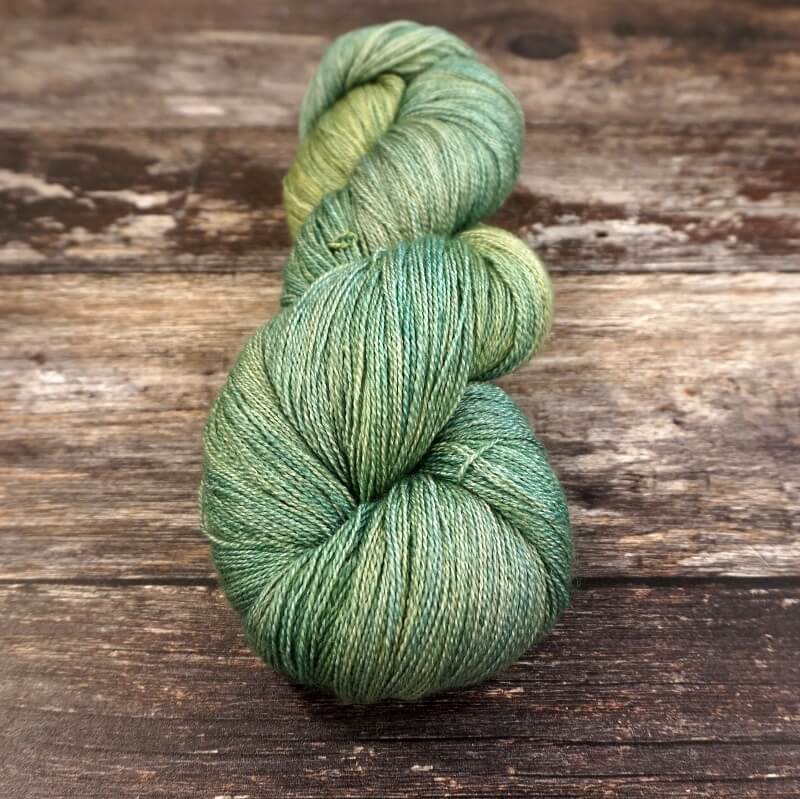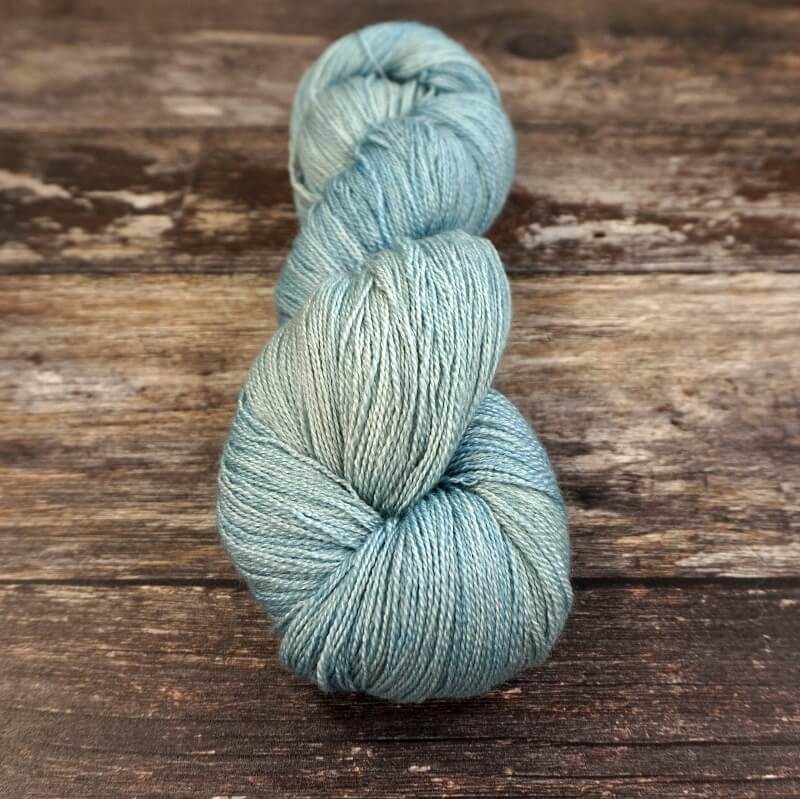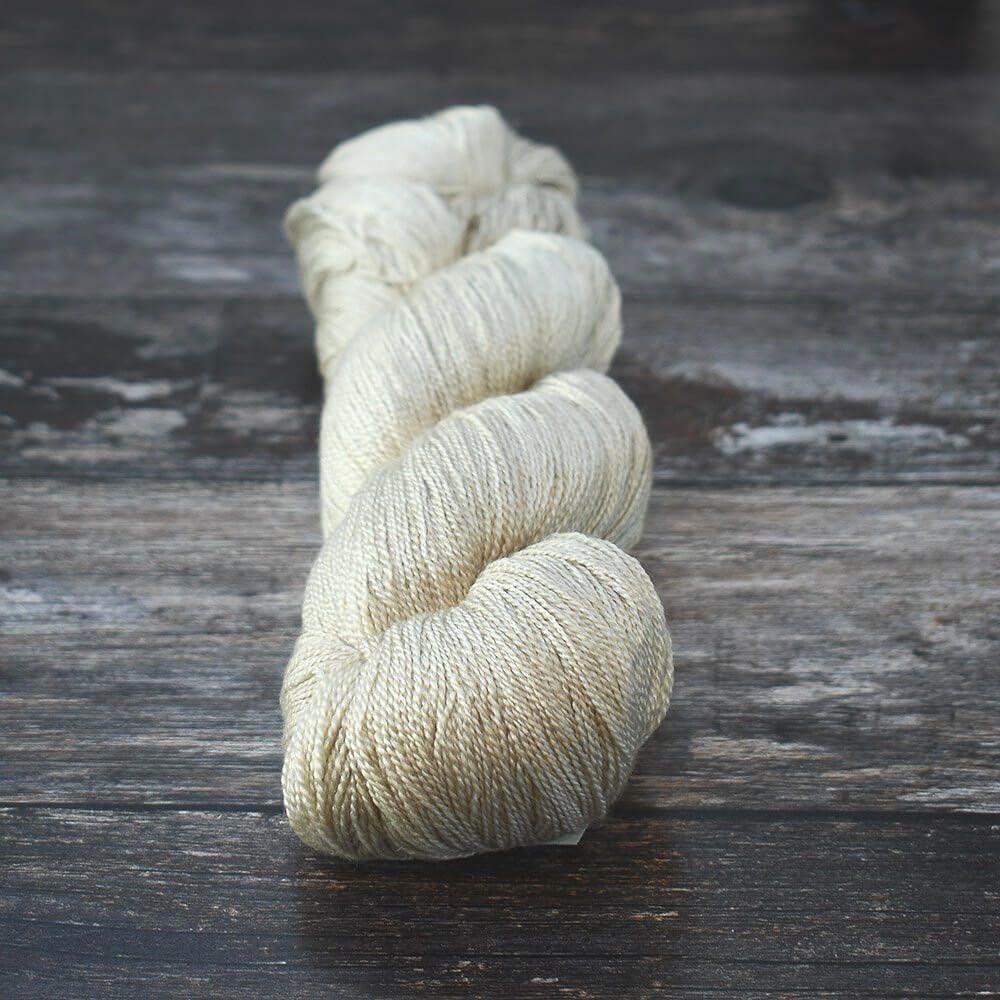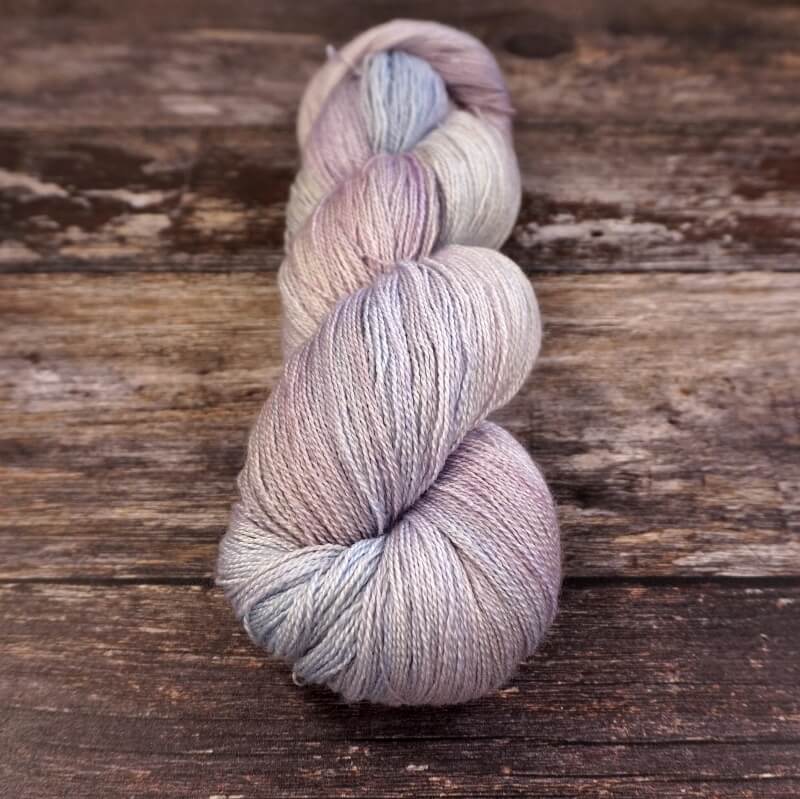 Glenallen by Dee O'Keefe, available to buy on Ravelry
Glenallen by Dee O'Keefe, available to buy on Ravelry
Glenallen is our newest shop sample. A stunning all over lace shawl knitted in Fyberspates Gleem Lace in shade Grape.
We already have a Gleem sample (Simple Laceweight Shawl) but I wanted a more complex design to show off the crispy stitches of Gleem and maybe tempt some knitters to try some lace.
This triangle shawl is BIG! There are three sizes to choose from in the pattern, this is the medium size.
It measures 180cm in width and 90cm deep. With its all over geometric lace pattern and large size this shawl looks great worn in several ways.
With the point at the front and the ends draped around.

Or tied at the neck.

Or folded over and wrapped like a scarf.
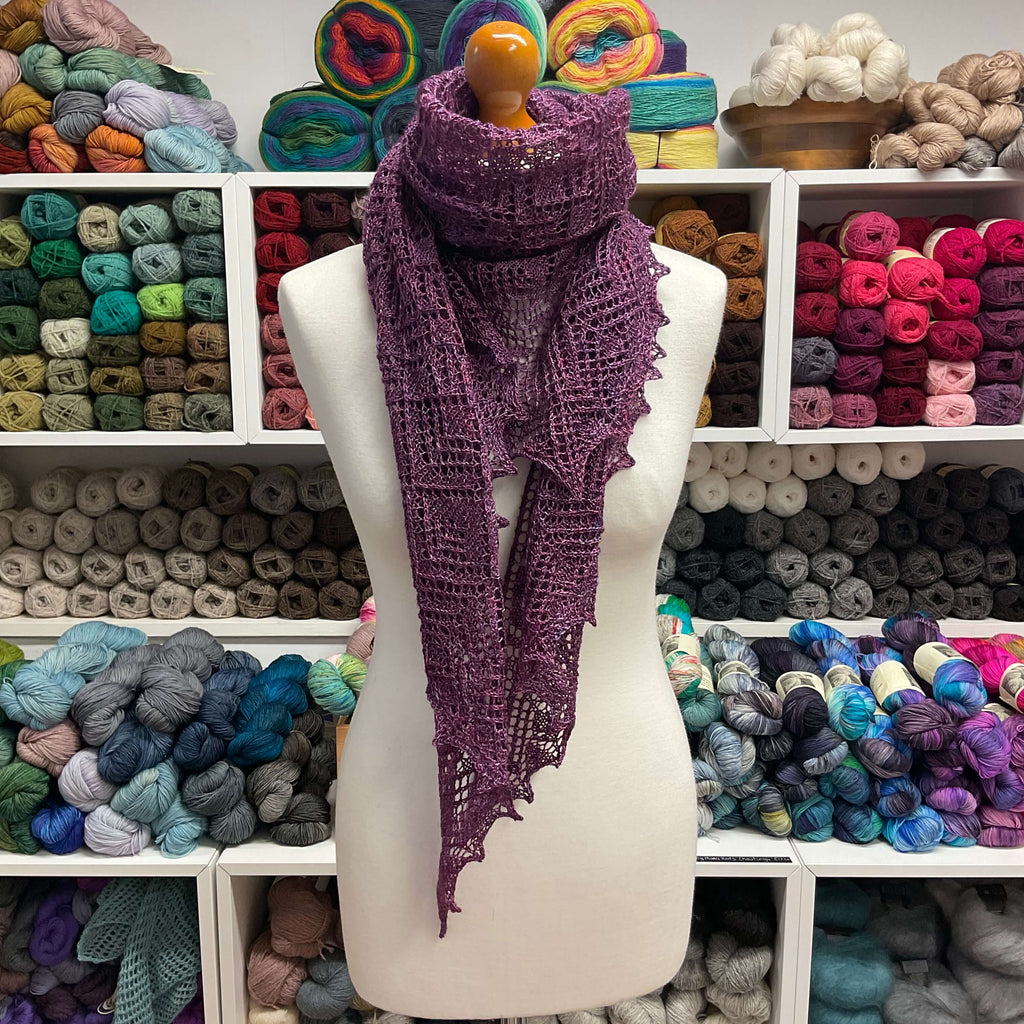
You can buy Glenallen on Ravelry and Gleem Lace here and in the Pittenweem shop.
Our shop sample was knitted by Cat. She says this about the project:
"Being relatively new to knitting, I've relied mainly on free patterns, but Glenallen is a great example of how much value there is in paying designers for their work.
The pattern itself is quite comprehensive including extra info, such as:
- 2 pages on how to read charts
- a full page on how to block the shawl correctly
- even an explanation as to why the particular double-decreases were used
So whilst this would be quite an ambitious project for a first-time lace shawl knitter, it would be an excellent project for progressing into more intricate patterns.
As with all lace, there is an element of delayed gratification in knitting this shawl, as it can take quite a few rows before the design starts to appear. The placement and direction of decreases isn't always obvious from what's on the needles, so some concentration is required.
To keep on track you can:
- colour-code the decreases in the charts
- use stitch markers for stitch repeats and
- insert lifelines at regular intervals
A great time-saver is to thread your lifeline (a thin smooth piece of yarn) through the hole in interchangeable knitting cables (if you have them) and pull it through. You will still need to reattach any stitch markers, so make sure they're lockable ones (not fixed ring) but this is much simpler than using a needle to add a lifeline through 400+ stitches.
(See more info on lifelines here and interchangeable needles here and here. This video also talks about how to use stitch markers and a lifeline, useful if you use a needle and thead to capture your stitches.)
If you use stitch markers for pattern repeats, be careful as these are not always placed consistently across the charts, and sometimes need to be shifted to accommodate decreases.
The size of the shawl is determined by the number of repeats of one of the charts. The sample is a 'medium', and measures 180cm across the top, and 90cm down to the point. Having seen other knitters getting caught out in a game of yarn chicken, I did what I often do and started a spreadsheet.
By jotting down the number of stitches in each row (helped by the stitch counts given at the end of each chart) you can calculate the total number of stitches. Combining this with weighing the yarn periodically gives a good estimate of how far you are through both the project and your ball of yarn.
The 'medium' size for this shawl is approximately 56,400 stitches (allowing extra for the bind-off), with roughly 50% of those after the repeats. Therefore, if you have more than half of the ball of yarn left after you make the suggested 4 and a half chart repeats, then you should be fine.
More importantly, you may run into trouble if you have used more than a third of your ball of yarn by the time you finish 3 and a half repeats. So you might want to consider moving straight onto the border charts and finish with a total of approximately 44,000 stitches - which would still be a sizeable shawl".
Cat blocked the shawl by soaking it then squishing out excess water. She then laid the shawl out flat. Simply smoothing and straightening the edges (no wires) and then pinned out each point.
You can read more about blocking at Tin Can Knits and Ysolda.
Tin Can Knits also have a good tutorial on lace knitting (and some free lace patterns too).
And the Anniken Allis website is also good for lace techniques.
Glenallen is a charted only pattern. If you're unfamiliar with charts check out this Tin Can Knits article.
We have a range of lace books too - with photographic tutorials and patterns. You can find them in our Lace Book collection.

You can follow Cat on Instagram and see her projects on Ravelry.
You can see Glenallen in the Pittenweem shop.
We also have another Gleem project, a Simple Laceweight Shawl. Read about it in our Gallery.
This shawl has a similar crescent shape to our Simple Shawl but it has a deep eyelet border with a simple yarn over, knit 2 together repeat.

